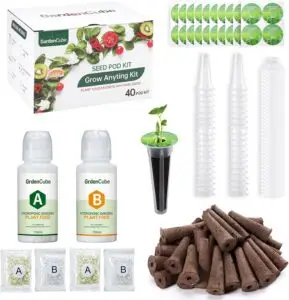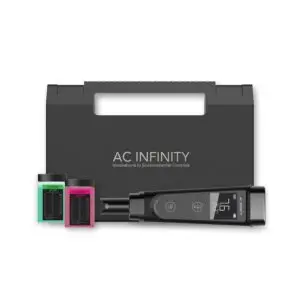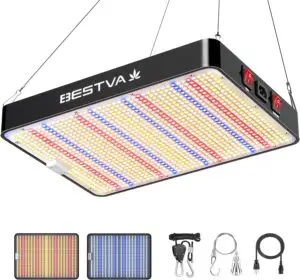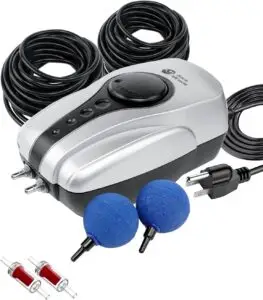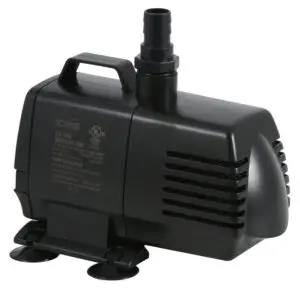What is Hydroponics, Aquaponics, and Waterbeds?
Introduction
For centuries, humans have sought more efficient ways to grow food. From the Hanging Gardens of Babylon to the floating gardens of the Aztecs, historical innovations have paved the way for modern hydroponic, aquaponic, and water-based farming techniques. Systems allow us to cultivate crops without soil, using water, nutrients, and fish to create sustainable food production solutions.
But what exactly are hydroponics, aquaponics, and waterbeds? In this guide, we’ll break down what hydroponics, aquaponics, and waterbeds are, how they work, and why they matter in modern agriculture.
What is Hydroponics?
Hydroponics is a soilless method of growing plants where roots are suspended in water or other growing mediums, absorbing nutrients directly. This technique is highly efficient, reducing water waste and allowing plants to grow faster.
Aquaponics is a system that combines aquaculture (raising fish) with hydroponics. Fish waste provides natural nutrients for the plants, and the plants help filter the water for the fish, creating a sustainable closed-loop system.
Waterbeds, in this context, refer to growing platforms where plants float on nutrient-rich water. This is commonly used for leafy greens like lettuce and can be an entry-level method for hydroponic farming.
Historical Origins of Hydroponics 🍺 🔠 Hanging Gardens of Babylon (~600 BCE) – Thought to use a form of hydroponics with flowing water.
🔠 Aztec Floating Gardens (Chinampas) – Artificial islands where crops grew on mats above nutrient-rich lake water.
🔠 World War II – The U.S. Army used hydroponics to grow fresh vegetables for troops stationed in the Pacific.
And when used in harmony with nature — such as adding aquatic plants, using natural light, or incorporating fish — hydroponics becomes a powerful, sustainable solution for growing food in any climate, even where soil is poor or space is limited.
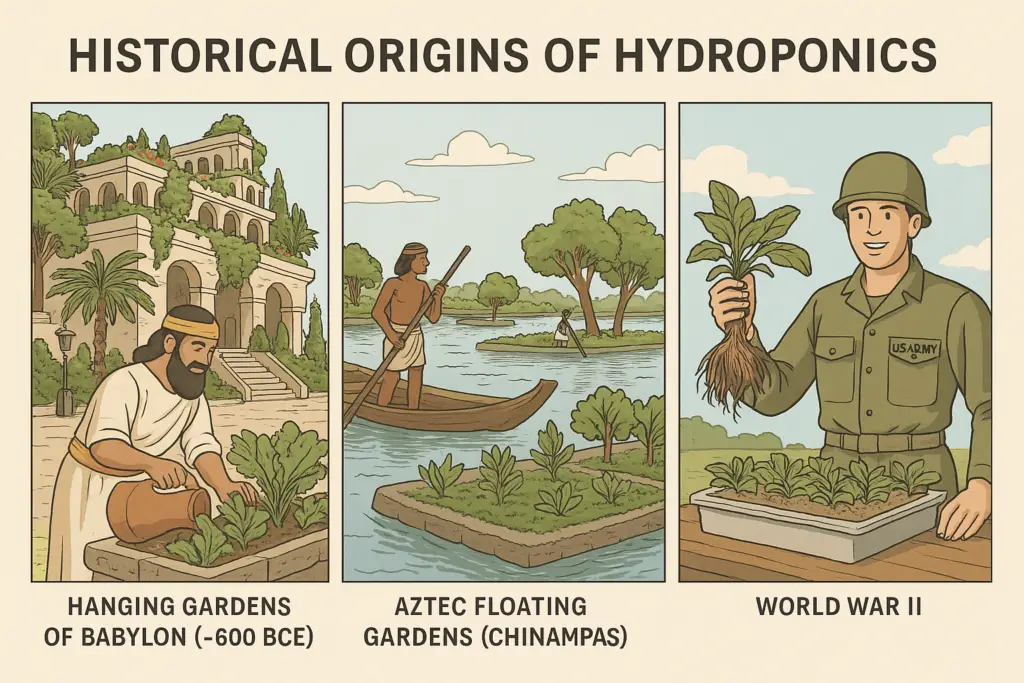
The Importance of Clean, Oxygenated Water
A successful hydroponic system requires clean, nutrient-rich, and oxygenated water. Without proper water quality, plants struggle to absorb nutrients, leading to stunted growth and disease. Oxygenation is crucial to prevent root rot and ensure healthy plant development. Using aeration systems like air pumps or bubblers can help maintain proper oxygen levels.
Water plants like duckweed, water hyacinth, or vetiver grass are known for their ability to absorb toxins, reduce algae, and increase dissolved oxygen, creating a cleaner environment for plant roots.
Innovative Water Purification Techniques 🔍 In Israel, natural water purification using aquatic plants has revolutionized wastewater treatment, making it clean enough for drinking. Imagine if hydroponic growers could use similar methods to purify water for sustainable plant growth! This concept opens doors for future advancements, ensuring even poor-quality water can be made viable for hydroponics. (Stay tuned for an upcoming article exploring these techniques!)
💧♻️ Sustainable Tip: Reuse Your Overflow
In a well-designed hydroponic setup, there’s often a small amount of spillover or excess water — especially when cleaning, refreshing reservoirs, or draining older solution.
Instead of discarding it, this nutrient-rich water can be reused to irrigate other plants like:
🍅 Tomatoes (grown in soil or gravel beds)
🌽 Sweetcorn
🌻 Sunflowers
🥔 Root crops like potatoes (if you’re doing partial soil setups)
🌿 Even fruit trees or potted plants nearby
This technique turns a potential waste product into a valuable resource, boosting productivity while saving water — perfect for a sustainable garden layout!
Best Plants for Hydroponics 🌿🌸
While hydroponics is highly efficient, not all plants are suitable. Large, bulky crops like corn, wheat, and some root vegetables take too long to yield and require extensive space.
✅ Best plants for hydroponics: 🌿 Leafy greens (lettuce, spinach, kale)
🌿 Herbs (basil, mint, cilantro)
🍕 Tomatoes, peppers, strawberries
🌾 Rice (in specialized setups)
🌺 Ornamental plants (Peace Lily, Anthurium, Orchids)
🌿 Indoor air-purifying plants (Pothos, Spider Plant, Lucky Bamboo)
🌷 Flowering plants (Begonias, Petunias, African Violets)
Hydroponics isn’t just about growing food—it’s also a powerful method for beautifying indoor and outdoor spaces. Decorative and air-purifying plants can thrive in hydroponic systems, providing cleaner air and an aesthetically pleasing environment. 📌 ([Insert an infographic comparing hydroponic-friendly vs. non-friendly crops])
Conclusion: The Future of Farming
From ancient innovations to modern technology, hydroponics, aquaponics, and waterbeds are revolutionizing food production. These systems help reduce water use, grow crops faster, and allow food cultivation even in areas with poor soil.
Whether you want to grow indoors, create a sustainable fish-plant ecosystem, or start a simple floating garden, these methods offer exciting possibilities for anyone exploring soilless farming.
💡 Coming soon! We’ll explore how natural water purification methods—like those used in Israel—could enhance hydroponic farming even in areas with poor water quality. Stay tuned!
💡 Ready to start your journey? Check out our next guide: “How to Grow Seedlings for Hydroponics!”
Recommended Products for Hydroponics & Aquaponics
This is where the fun begins. 😊
We’re not just listing gear—we’re opening a door to explore, imagine, and build something that fits your space, your goals, and your rhythm.
We try to recommend quality products that are available on the market right now, but in the end, it’s your planning that brings it all to life.
Are you starting small with a tank and a few herbs?
Do you dream of turning your backyard into a green oasis with flowing water and living plants?
Or maybe you’re building a full-scale system to feed your family or even make a little income?
💡 Take your time. Explore what’s possible. Let your imagination grow with your system.
Hydroponics is part science, part art—and you get to paint with water and roots.
❓Have questions? Ask us—we’re here to help you figure out what fits your plan, your space, and your vision. There’s always a solution—and we’ll help you find it.
.
Hydroponic Starter Kit – 166pcs All-in-One System
Perfect for leafy greens, herbs, or strawberries. Comes with nutrients, net cups, rockwool, and pH testers. Great for beginners!
